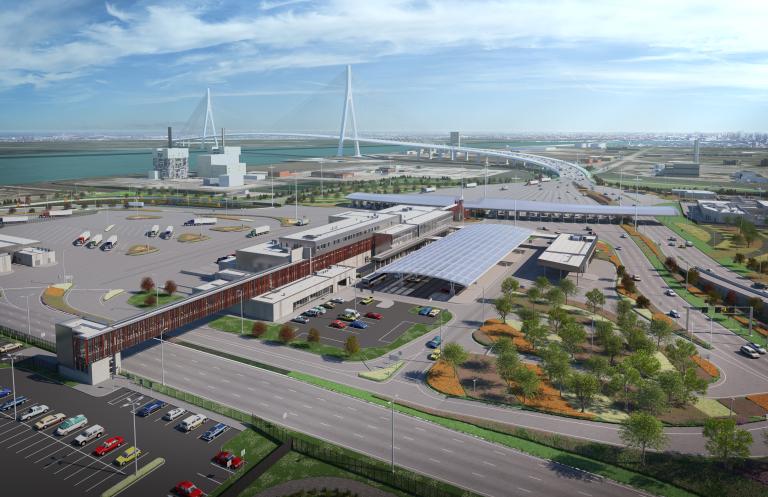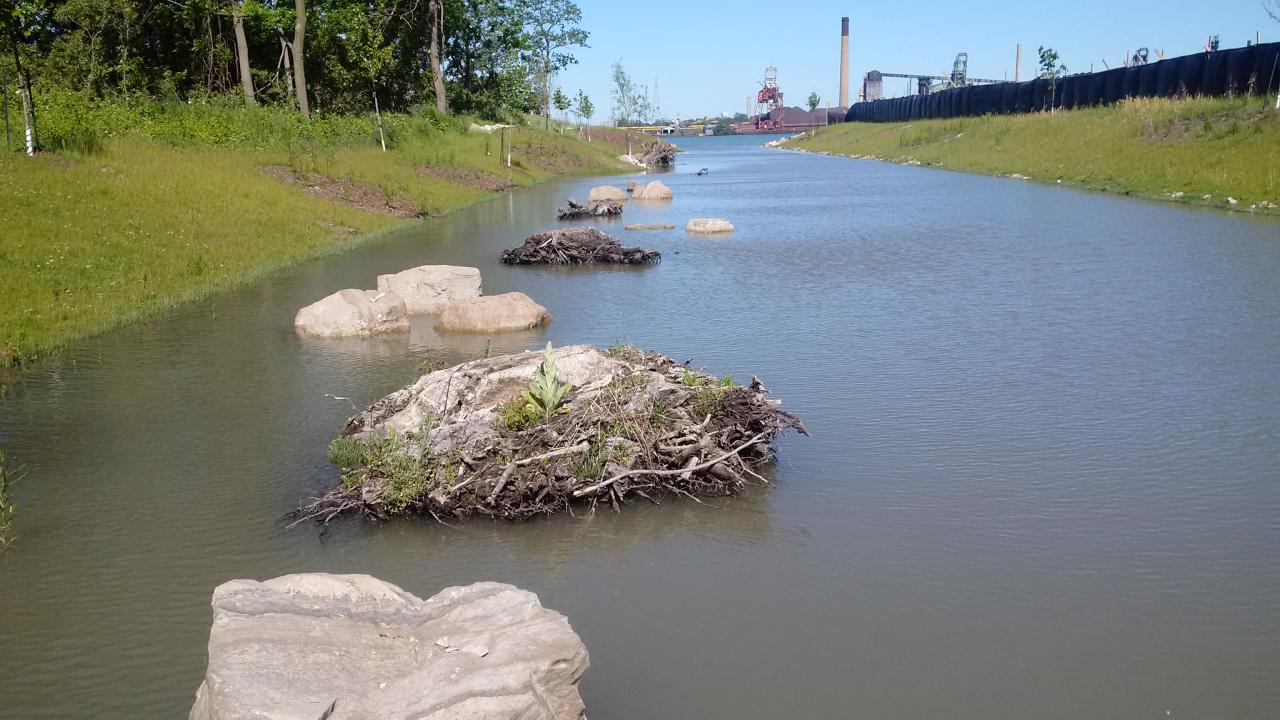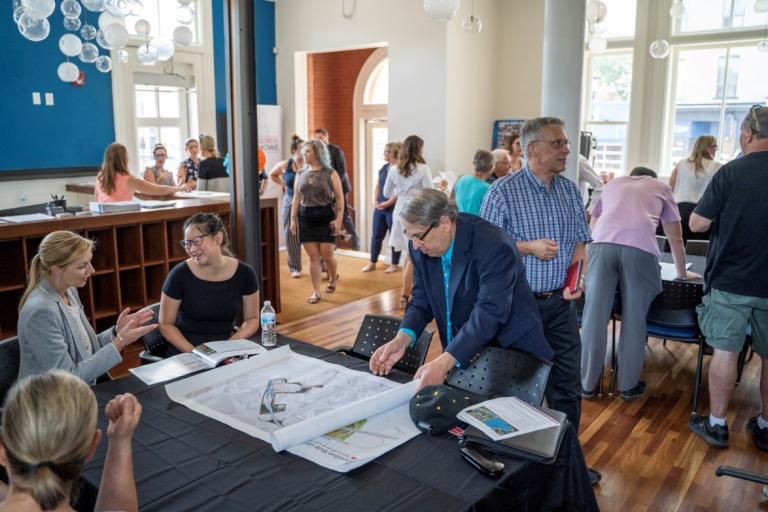Sustainability

-
- Who We Are
- Mandate, Mission and Governing Legislation
- Access to Information and Privacy (ATIP) Requests
- Info Source
- Corporate Reports
- Annual Public Meetings
- Current Year (Transparency)
- Archives (Transparency)
- Governance
- Diversity, Equity, Inclusion and Accessibility
- Environmental, Social and Governance
- Contact Us
- Become an email subscriber
Our Sustainability Commitment
Windsor-Detroit Bridge Authority (WDBA) is committed to sustainability during construction and operations of the Gordie Howe International Bridge. Sustainable development is not only important to us, but to the Government of Canada and our stakeholders. As a Canadian Crown corporation, it is our duty to consider the financial and nonfinancial impacts of our operations by integrating environmental, social and economic considerations in our management approach and providing benefits for the adjacent communities where possible. We are committed to integrating sustainability considerations into our decisions and to continual improvement through analysis of practices, benchmarking, assessment of risks and opportunities and engaging stakeholders on the issues that matter most. The future success of the Gordie Howe International Bridge depends on the sustainable work we do today and in the years to come."Grant Hilbers, Chief Capital Officer, WDBA
The Gordie Howe International Bridge project is an example of sustainable infrastructure – one that is socially, environmentally and economically responsible, contributes to a cleaner environment and protects communities on both sides of the border from the impacts of climate change, both now and in the future.
Project sustainability goals and objectives
Maintain safety and security by creating a safe environment for the public and workers; minimizing nuisances such as light pollution, noise, odors, and vibration; and enabling access and mobility.
Create a culture of leadership by developing a strategic and collaborative commitment to sustainability; clearly defining roles and responsibilities; and actively engaging stakeholders.
Evaluate life-cycle costs by considering cost of ownership over the life of the Project Agreement to provide a sound basis for decision-making.
Design for durability and resiliency by planning for long-term maintenance and monitoring; considering short and long-term risks; and demonstrating attention to extending the project’s useful life.
Provide economic opportunity by achieving diverse workforce goals, creating Disadvantaged Business training; and coordinating with a comprehensive Community Benefits Plan.
Conserve non-renewable resources by reducing energy and water demands; considering sources of renewable energy and water re-use; using recycled, recyclable, local, biobased, and salvaged materials; reducing waste generation; diverting waste from landfills; optimizing energy efficiency in construction and operations; and monitoring energy and water consumption during operations.
Protect the natural world by employing green infrastructure stormwater management design principles; protecting, conserving, and enhancing environmentally sensitive areas; avoiding unsuitable geography and greenfields; and coordinating with all environmental obligations, including, aquatic resources, air and water quality, noise and vibration, invasive species, wildlife habitats, erosion and sedimentation control, historic and cultural resources, wetland protection, stormwater management, and light pollution reduction.
Safeguard cultural resources by preserving open space and considering community values, local character, and historic, and cultural resources.
Proactively engage the public by communicating our goals and achievements with the public.
Learn more about our commitment to sustainability from Karey Thatcher, Architectural Project Coordinator with Windsor-Detroit Bridge Authority (WDBA).
Sustainability and ESG-related activities on the Gordie Howe International Bridge project support the achievement of several Government of Canada priorities, including:
Governance
Clear lines of authority and oversight regarding sustainability and ESG activities and commitments have been established on the Gordie Howe International Bridge project. At the project level, Bridging North America’s Sustainability Policy demonstrates the approach that addresses the sustainability goals and objectives during the design-build and operations phases.
Through its oversight role, additional policies, plans and ESG-related governance bodies have also been integrated into WDBA’s operations, including a ESG Framework, ESG Policy and ESG Committee that reports on adherence and progress to WDBA’s Executive Team as well as the Board of Directors.
Once completed, the Gordie Howe International Bridge will be a high-performance sustainable building and infrastructure project, designed for resource efficiency and cost effectiveness in construction and operation. Emphasis has been placed on measurable green building and infrastructure strategies and processes to increase facility flexibility and improve user experience.
The Canadian and US Port of Entry facilities are designed to meet at least LEED v4 Silver rating and the Bridge and Michigan Interchange earned an Envision Platinum Award, the highest possible distinction from the Institute for Sustainable Infrastructure.
The end-to-end design approach of the Gordie Howe International Bridge project includes measures to minimize environmental impacts and create innovative, sustainable infrastructure.
Examples of design excellence include:
Design Features
- Highway-to-highway connectivity with optimization of traffic flow to create a system that allows free-flowing traffic and development of anti-idling protocols to reduce diesel emissions.
- Materials for the project selected based on durability to achieve a 125-year lifespan.
- Energy-efficient, LED and low-maintenance lighting to minimize light spill and any effect on migratory birds.
- Inclusion of a 3.6 metre/12 feet wide toll-free cross-border multi-use path that will connect into local trails.
- A peregrine falcon box will be installed on the bridge to facilitate the nesting of falcons within sight of the Canadian shoreline

- Water management systems used to reduce water demand, such as low-flow water fixtures.
- POE facilities situated and designed to take advantage of natural light to reduce energy needs.
- Energy and resource efficient materials selections such as highly insulated walls and energy efficient glass.
- Use of LED lighting on exteriors of the POE that are low maintenance and minimize light spill.
- Use of Native vegetation that is drought resistant and low maintenance to support restoration of a Carolinian landscape and the protection and expansion of adjacent natural areas.
- Each POE has its own mechanical plant for heating, ventilation and air-conditioning which is more efficient than separate systems for distinct buildings.
- A dedicated cogeneration power plant has been accommodated in the design to account for onsite energy generation.
- The POE buildings are designed with a target to reduce energy consumption by 32% and the US POE will be Energy Star certified.
- Installation of naturalized stormwater management ponds using native species to help control stormwater runoff and protect water quality.
- Green roofs will be incorporated on select buildings.
- Landscape design plans that contribute to stormwater management, slope stabilization and low maintenance requirements.
- Establishing significant buffers around the Ports of Entry to maximize the distance between operations and adjacent receptors.

- Implementation of a comprehensive environmental program that address over 450 conditions identified in the bi-national Environmental Study that preceded the project.
- Extensive wildlife and Species-at-Risk protections
- Extensive construction mitigation measures to minimize impacts to adjacent receptors
- Enhancements completed in adjacent municipal drain (the Broadway Drain) to prevent localized flooding and support aquatic and terrestrial habitat improvements.
- Habitat features planned to be incorporated along the Detroit River shoreline in Canada to support spawning requirements for select endangered aquatic species.
- Maintains ISO 14001 third party certification, including an Environmental Management System to monitor and address potential environmental impacts and a comprehensive public consultation program.
Learn more:
Species at Risk and the Gordie Howe International Bridge
Learn more about the Broadway Drain enhancement
9 Questions with Lindsay Bennett, WDBA Environmental Compliance Specialist
.

- Incorporation of Public Art into project components
- Extensive consultation program with the public, Indigenous Peoples, regulatory agencies and other stakeholders throughout the project’s life
- Inclusion of a Community Benefits Plan that includes economic development and investments into community infrastructure
- Processes to assess, manage and report on climate-related risks and opportunities
- The multi-use path is integrated into the Trans Canada Trail in Windsor, Ontario and connects to the Iron Belle Trail and the Great Lakes Way in Detroit, Michigan

The project team recognizes the importance of accountability and transparency on sustainability and ESG-related activities and issues quarterly progress reports:
View the Spring 2024 Quarterly ESG Report.
The project team is committed to building sustainable infrastructure that will benefit generations to come and taking steps towards mitigating climate change. WDBA’s inaugural TCFD Report provides an overview of operational practices and performance on climate-related risks and opportunities for the 2022 calendar year. WDBA will continue to issue TCFD disclosures on an annual basis. Read the report to learn more.
